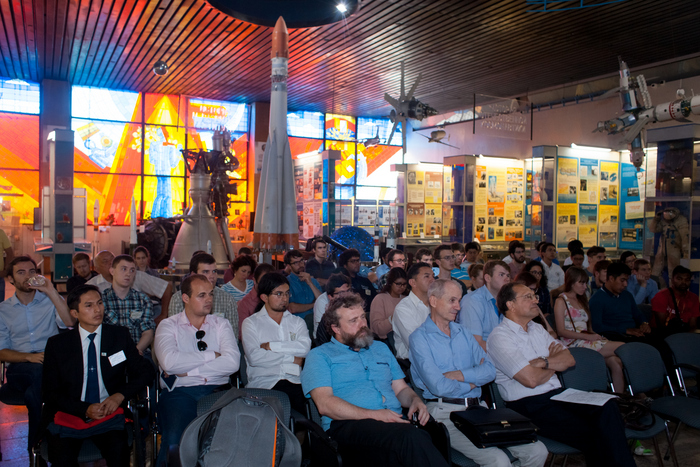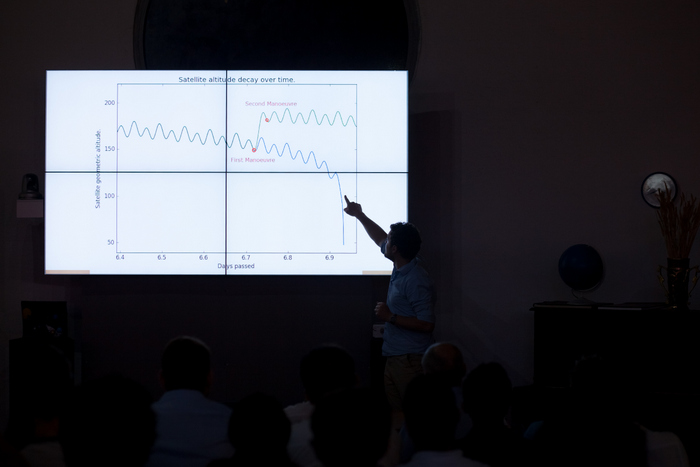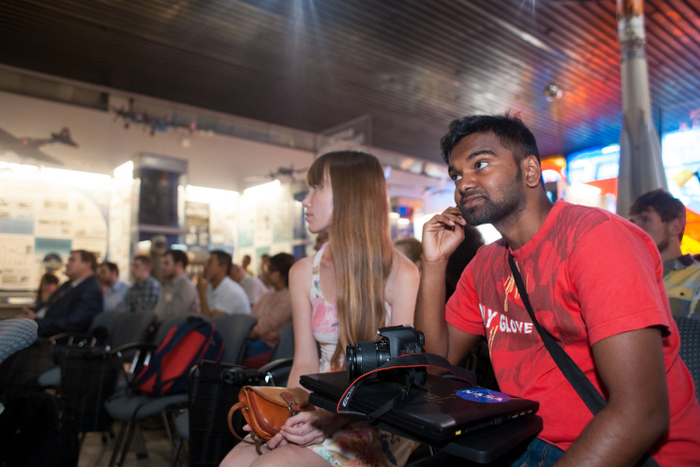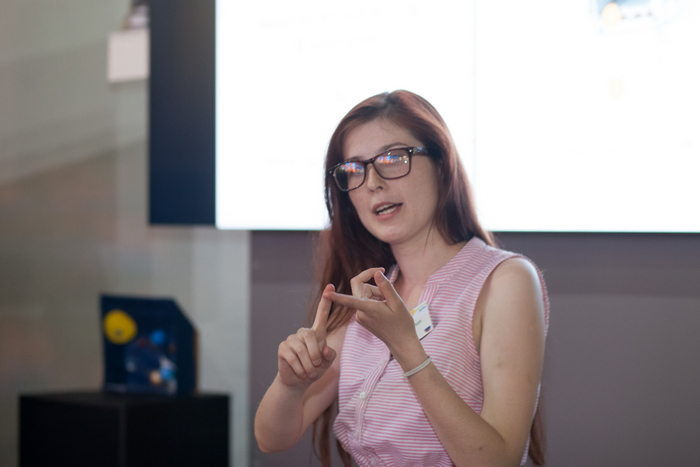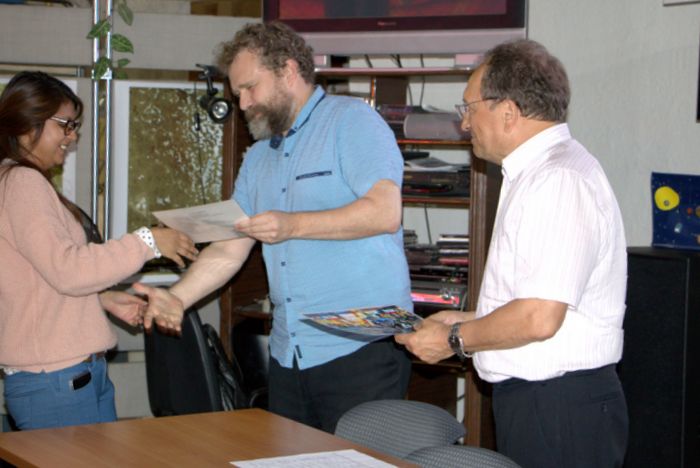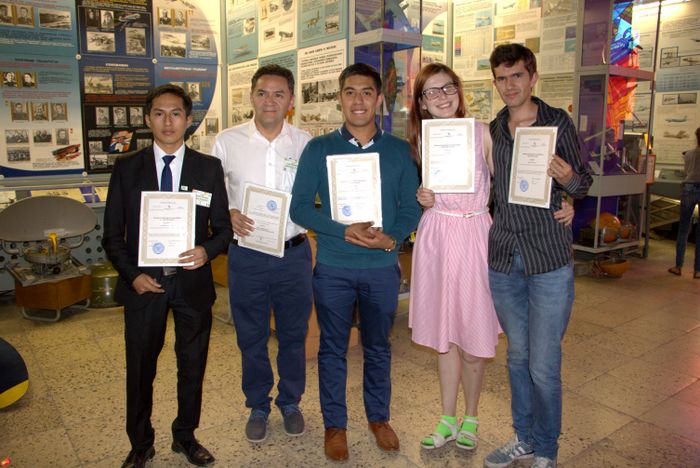Samara University resumed the XII International Summer Space School “Advanced space technology and experiments in space. From the mission idea to the nanosatellite project”. It was arranged by the following organizations: Samara University, RSC “Progress”, Volga Department of Russian Academy of Cosmonautics named after K. E. Tsiolkovsky with the support of the Space Universities Administrative Committee of the International Astronautical Federation.
“I'm happy with the result, showed today by the School participants. I believe that the experiment that we conducted this year, aimed at the activation of independent work of the school participants in team, having a goal to develop a preliminary draft of the predetermined destination nanosatellite, was a success. We will continue this School format”, stressed Igor Belokonov, Head of the School, Head of the Inter-University Department of Space Research of Samara University.
One of the key goals of the School is to attract young people to the nanosatellites development, promotion of international projects of interest for collaborative research and implementation.
Protection of the four projects, each of which has good prospects for development, was held at the school closing.
Currently, a manoeuvring unit for nanosatellites that will run on compressed gas is being developed at the Department of Space Research of Samara University. Its purpose is to ensure the maintenance of the orbital manoeuvring and nanosatellite flying at low altitude. This theme was the basis of the complex project for a group of two nanosatellites, which involved two groups of the School participants. The backbone of the first group were the students of the oldest university in Europe - Delft University of Technology (Netherlands), the backbone of the second group were the students from the University of ISAE-SUPAERO Toulouse (France) with which Samara University has established good communication. In addition, the Head of the international direction of ISAE-SUPAERO University Mrs. Benedict Esquader supports the idea of organizing a joint Russian-French project in the field of training of nanosatellites group flight technology for the study of this trend.
The Students from Delft University offered an original solution for the manoeuvring satellite, purposed to receive information from a scientific satellite, developed by the French students, and transfer it to the Earth, using a variety of space communication technology. This university has a high rating level in the field of space technology. The students offered to take the data from the scientific nanosatellite during the most important phase of entry into the dense layers of the atmosphere until it is destroyed.
Another project, which was offered to the Summer Space School participants, is the creation of a nanosatellite for the Earth's ionosphere monitoring. To some extent, the ionosphere reflects the events of natural origin that occur on the Earth. There is a strong correlation between the earthquakes occurrence and changes in electron density before this event. The project is very interesting and useful, and it has all the chances to be implemented. The problem of earthquake prediction is extremely important for Peru, Colombia and Brazil. Therefore, the School participants from these countries worked on the project of such nanosatellite.
The latter project was associated with the creation of nanosatellite for the Earth observation. This is the most popular field of space research, and developing countries are very interested in it. Therefore, the creation of the Earth observation nanosatellite was proposed to a group, where the representatives of Mexico played dominant role. This fall representatives of Samara University will continue discussion of this topic with representatives of the Mexican Space Agency.
All four groups have succeeded to manage the tasks, although has some difficulties. “I am pleased to see that the Summer Space School is of great benefit for the education and growth of our young colleagues, as well as contributes to the development of international cooperation. Today, some projects were presented at the school closure. They were focused on design, selection of on-board nanosatellites systems, calculation of the power energy budget, but very little attention has been paid to the antennas. Meanwhile, there are dozens of different antennas on any spacecraft, and there’s often a problem with the antenna unit after the satellite separation, as well as during its normal operation. I would like to recommend to the School participants to pay special attention to the electrodynamical aspect of a nanosatellite in the future ", - noted Professor Yuriy Spodobaev, Chief Researcher of the Research and Educational Centre of Technical Electrodynamics and Antenna Systems of the Samara Branch of Radio Research Institute.
The event ended with a solemn presentation of diplomas and sweet prizes and a small buffet. The School graduates thanked the School Head, congratulated each other and expressed the hope to meet again herein.
“This School is a bright, unusual and highly sought-after event. For two weeks there were reinforced lessons, leading professors gave us lectures, they explained promising space technologies to us and touched very interesting topics. The School members had different levels of training, however, it was interesting. Working together as a team we have applied our knowledge and shared it with each other. If someone was strong in the on-board power, he helped with energy calculation. The one who knew the satellite systems, worked with it at once, explaining what’s suitable or not. Despite the international composition, we have quickly found a common language. By no means, working in teams was a very valuable experience in the School. We became like a family”, -... shared her impressions Julia Koftun, a student of Amur State University.
Photo by Artem Onopriyenko (Photo Club “Illuminator”)
